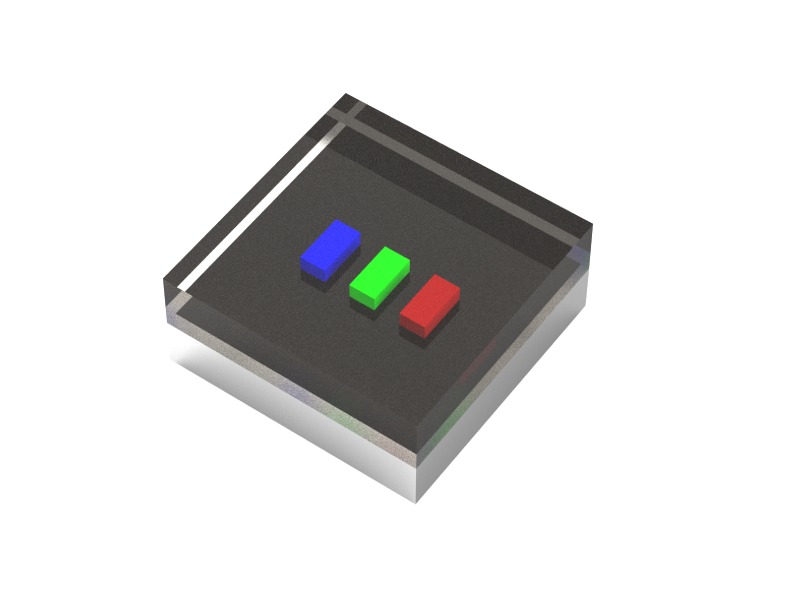In a groundbreaking announcement that could reshape the future of data transmission and display technology, X Display Company (XDC) has unveiled the world’s fastest display—a microLED-based system capable of reaching a staggering one million frames per second (fps). More than just a record-breaking feat, this innovation paves the way for a future where displays are not just visual output devices, but high-speed optical transmitters capable of machine-to-machine communication without wires or fiber.

The world’s fastest display based on microLED with 1 million fps frame rate
Designed for low-power, high-bandwidth communication in AI-driven data centers, this display isn’t built for human eyes. Instead, it emits structured patterns of light using thousands of microLED emitters operating across multiple wavelengths. These are captured by a high-speed camera receiver, creating a real-time, free-space communication link. According to XDC, the system’s energy efficiency is two to three times better than existing 800G optical transceivers, offering massive potential savings in environments where cooling and networking are among the largest operational costs.
As Nikhil Jain, XDC’s Director of Optoelectronics, emphasized:
“This breakthrough ushers in a wholly new paradigm where displays transcend their traditional role as mere interfaces for humans, evolving into optical data transmitters between machines.”
While XDC’s innovation stretches frame rate to scientific extremes, the concept of frame rate is fundamental to all LED displays. Frame rate—measured in frames per second (fps)—refers to how many times per second the display refreshes its image data. In conventional display contexts like video walls, digital signage, or immersive entertainment, frame rate determines how smooth and fluid the motion appears.
It’s crucial to differentiate frame rate from refresh rate, the latter typically measured in Hz and referring to how often the LED panel updates its pixels per second. While related, frame rate concerns content, and refresh rate concerns hardware performance. A mismatch can lead to stuttering or tearing, especially in high-motion environments.
In both consumer-facing and industrial contexts, frame rate plays a pivotal role:
Smoother Motion Playback: A 60fps screen displays twice the image data as a 30fps screen, producing visibly smoother movement.
Camera Synchronization: In XR (Extended Reality), film, or broadcast studios, high frame rates like 120fps or 240fps are needed to match camera shutter speeds and prevent flickering.
Fast-Motion Clarity: For sports venues or interactive installations, higher frame rates preserve detail and clarity even during rapid action.
Data Throughput and Latency: In machine vision or communication (like XDC’s use case), higher frame rates mean faster data transfer with lower latency—an essential element for real-time AI systems.
While XDC’s one-million-fps system is designed for specialized applications, most LED display systems operate within a more familiar range:
| Application | Typical Frame Rate | Remarks |
| Digital signage / Retail display | 30–60 fps | Standard video playback, sufficient for static or slow-moving content |
| Broadcast studios / XR stages | 60–240 fps | High frame rates eliminate flickering during filming |
| Sports arenas / Live events | 120–144 fps | To ensure clear capture and smooth replays |
| Gaming & Simulation walls | 144–240 fps | Matched to high-end GPU outputs for ultra-smooth visuals |
The current industry trend sees high-end manufacturers pushing toward 120fps and beyond, especially with the rise of LED-based virtual production environments.

Kinglight new MC1010 microLED for outdoor application
XDC’s milestone isn’t just about achieving record frame rates—it signals a transformational shift in how we think about LED displays. With frame rates hitting the megahertz range and the promise of terabit-per-second free-space transmission, displays are becoming network devices. They may one day replace traditional cabling in data centers and support applications as advanced as optical computing.
As cloud infrastructure, AI models, and machine learning workloads continue to scale, energy-efficient, high-speed optical links powered by LED displays could become a foundational technology. For now, XDC has given us a glimpse into that ultra-fast, low-latency future—one luminous pulse at a time.